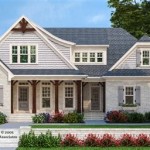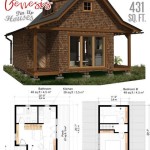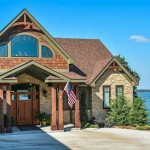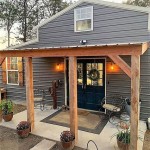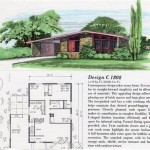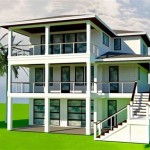Blueprint Simple Bird House Plans
Building a birdhouse offers a rewarding project for both experienced woodworkers and beginners. A simple birdhouse design, paired with comprehensive blueprints, allows for a streamlined construction process and a finished product that effectively attracts and shelters local bird species. This article will delve into the key elements of blueprint reading and the necessary steps for creating a functional and aesthetically pleasing birdhouse from simple plans.
Understanding Birdhouse Blueprints
Blueprints provide a visual representation of the birdhouse's dimensions, construction, and assembly. Understanding the various elements of a blueprint is crucial for successful execution. Typically, blueprints include multiple views of the birdhouse: a front view, a side view, and a top view. These views illustrate the height, width, and depth of the structure. Additionally, blueprints detail specific measurements for each component, ensuring accurate cutting and assembly. They also often include a materials list, specifying the type and quantity of wood required. Lastly, assembly instructions, sometimes visually presented through exploded diagrams, guide the builder through the construction process.
Essential Components of a Simple Birdhouse Plan
A well-designed birdhouse prioritizes the needs of the birds it intends to attract. The entrance hole, or entry hole, is a crucial feature. Its size dictates which species can access the house. A smaller hole deters larger, more aggressive birds from taking over the nest, allowing smaller species to thrive. Ventilation is vital for regulating temperature and humidity inside the birdhouse. Small gaps or holes strategically placed near the roofline allow for air circulation. Drainage holes, typically located at the bottom of the floor, prevent water accumulation, keeping the nesting environment dry and healthy. Finally, a slanted roof facilitates water runoff, protecting the birdhouse from weather damage and promoting longevity.
Choosing Materials and Tools
Selecting the appropriate materials and tools simplifies the construction process and contributes to a durable and functional birdhouse. Untreated wood, such as cedar, pine, or redwood, is preferred for its weather resistance and natural appearance. Avoid using pressure-treated lumber, as the chemicals used in the treatment process can be harmful to birds. Essential tools for birdhouse construction include a saw (hand saw or circular saw) for cutting wood pieces to the correct dimensions, a drill for creating pilot holes and driving screws, a screwdriver or drill driver for fastening the components, sandpaper for smoothing rough edges and surfaces, a measuring tape or ruler for accurate measurements, and a pencil for marking cut lines.
Building the Birdhouse: Step-by-Step Guide
Begin by carefully studying the blueprints and cutting the wood pieces according to the specified dimensions. Accurate cutting is crucial for proper assembly and a structurally sound birdhouse. Next, drill pilot holes before driving screws. Pilot holes prevent wood from splitting, especially when using harder woods. Assemble the birdhouse walls, ensuring square corners and tight joints. Secure the sides with screws, adding wood glue for increased stability. Attach the floor to the assembled walls, creating a solid base. Next, position and secure the roof, ensuring a snug fit and adequate overhang for weather protection. Finally, drill the entrance hole using the appropriate size based on the intended bird species. Sand any rough edges or surfaces for a finished appearance and to prevent splinters that could harm the birds.
Placement and Maintenance
Proper placement and regular maintenance are essential for attracting birds and ensuring their safety. Mount the birdhouse in a sheltered location, protected from direct sunlight, strong winds, and rain. An ideal height for placement is between 5 and 10 feet above the ground. Ensure the entrance hole faces away from prevailing winds to protect nesting birds from harsh weather. Regularly clean the birdhouse after each nesting season. Remove old nesting materials and debris to prepare the house for the next occupants and prevent the buildup of parasites or bacteria.
Variations and Customization
While simple birdhouse plans offer a straightforward starting point, customization allows for creativity and the ability to cater to specific bird species. Adjustments to the entrance hole size, overall dimensions, and roof style can attract different types of birds. Adding decorative elements, while maintaining functionality, can enhance the aesthetic appeal of the birdhouse. Consider incorporating natural elements, such as bark or twigs, for a more rustic look. Researching the preferred nesting habits of local bird species can inform design choices and result in a more effective and attractive birdhouse.

Free Diy Birdhouse Plans For Your Backyard

Basic Bird House Plan

Birdhouse And Nest Box Plans For Several Bird Species The Birders Report

15 Bird House Plans Simple Diy

Free Bird House Plans Bluebird Purple Martin Wren More

Birdhouse And Nest Box Plans For Several Bird Species The Birders Report

Free Birdhouse Plans

Birdhouse Plans Easy One Board Diy Project Free Printables Monograms Design Tools Patterns Projects

Bird House Plans Free Construct101

Wren Birdhouse Plans Perfect For Wrens And House Finches
Related Posts

